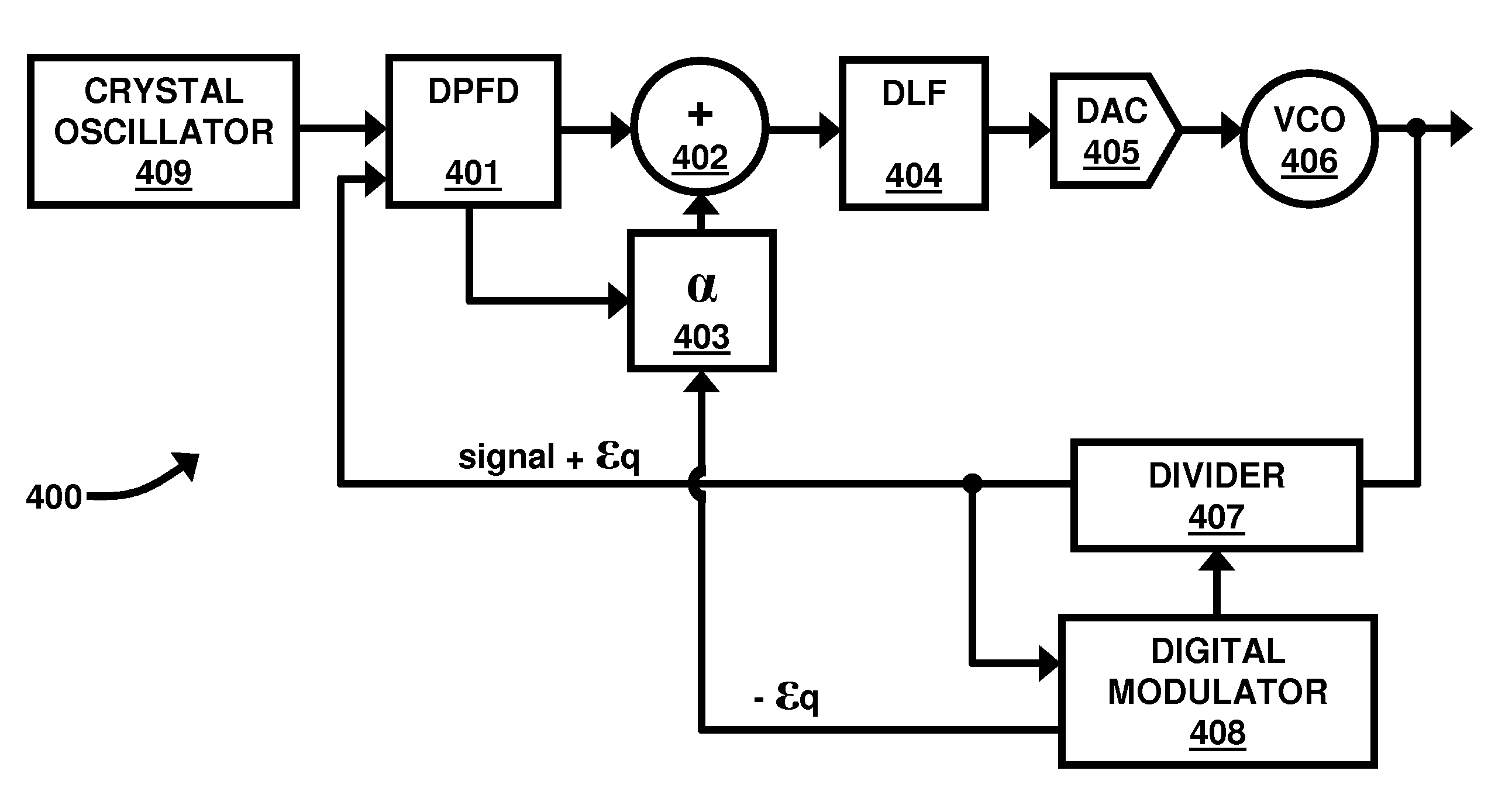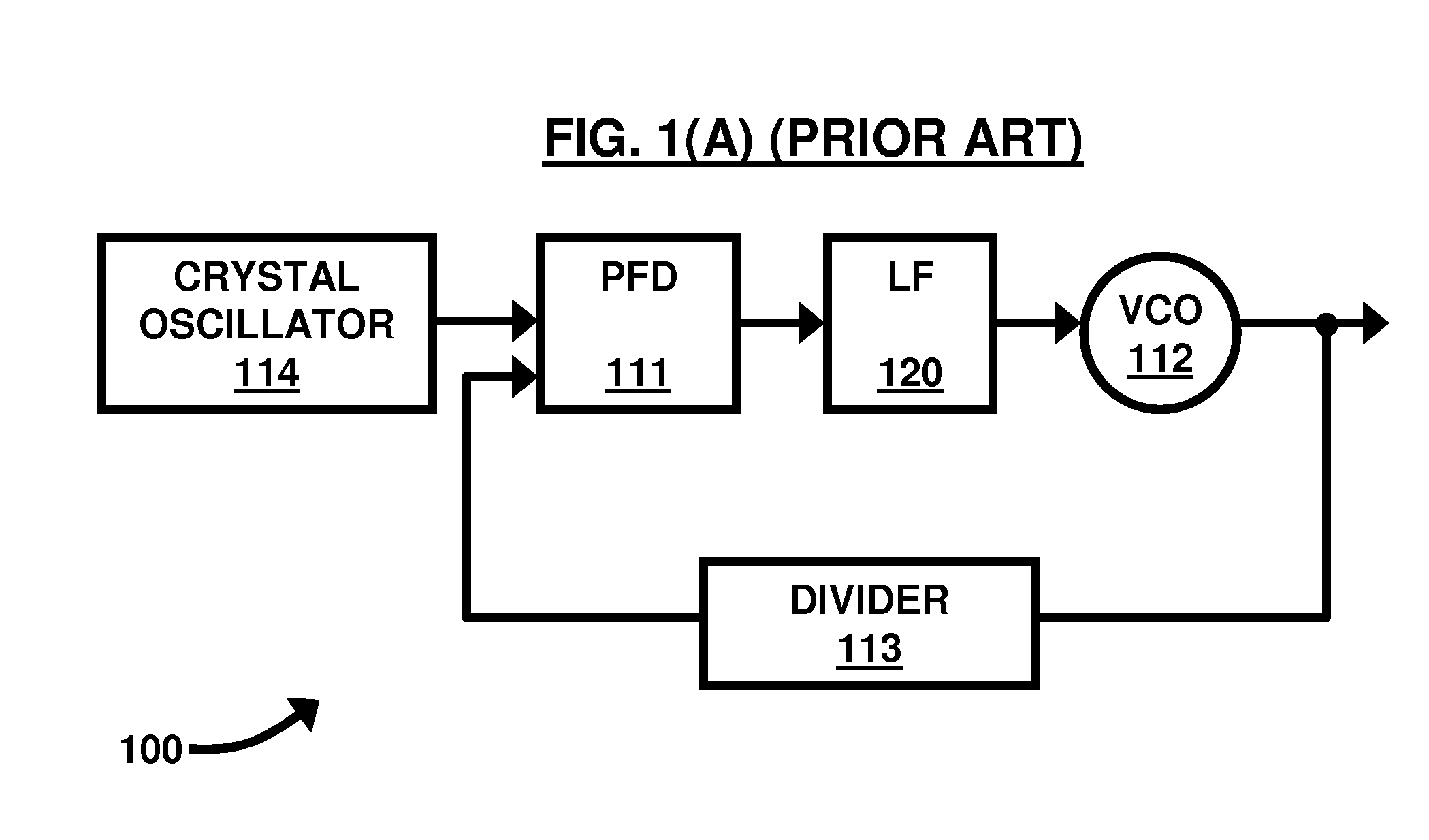Low-power, low-jitter, fractional-n all-digital phase-locked loop (PLL)
a phase-locked loop, fractional-n technology, applied in the direction of angle demodulation by phase difference detection, automatic control of pulses, electrical apparatus, etc., can solve the problems of limiting the output frequency to the output frequency is limited to be an integer multiple of the input frequency, and the problem of system-on-chip problems
- Summary
- Abstract
- Description
- Claims
- Application Information
AI Technical Summary
Benefits of technology
Problems solved by technology
Method used
Image
Examples
Embodiment Construction
[0036]The embodiments herein and the various features and advantageous details thereof are explained more fully with reference to the non-limiting embodiments that are illustrated in the accompanying drawings and detailed in the following description. Descriptions of well-known components and processing techniques are omitted so as to not unnecessarily obscure the embodiments herein. The examples used herein are intended merely to facilitate an understanding of ways in which the embodiments herein may be practiced and to further enable those of skill in the art to practice the embodiments herein. Accordingly, the examples should not be construed as limiting the scope of the embodiments herein.
[0037]As previously mentioned, there is a limitation to the minimum jitter achieved by a sigma-delta PLL which is dictated by balancing the jitter contribution of the sigma-delta quantization noise and the jitter contribution of the VCO phase noise. This minimum jitter is still quite high for m...
PUM
 Login to View More
Login to View More Abstract
Description
Claims
Application Information
 Login to View More
Login to View More - R&D
- Intellectual Property
- Life Sciences
- Materials
- Tech Scout
- Unparalleled Data Quality
- Higher Quality Content
- 60% Fewer Hallucinations
Browse by: Latest US Patents, China's latest patents, Technical Efficacy Thesaurus, Application Domain, Technology Topic, Popular Technical Reports.
© 2025 PatSnap. All rights reserved.Legal|Privacy policy|Modern Slavery Act Transparency Statement|Sitemap|About US| Contact US: help@patsnap.com



